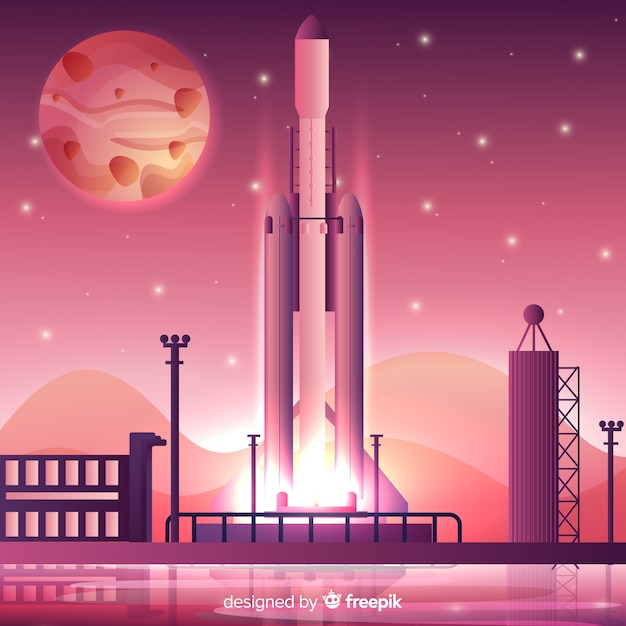
In 1969, I was sitting sleepily on my parents’ bed, watching the grainy black-and-white TV image of the first man walking on the moon. For me, space was all about the adventures of my childhood hero, Captain James T. Kirk, and I knew the opening words of “Star Trek” by heart: “Space, the final frontier, these are the voyages of the Starship Enterprise…” I also loved singing along to David Bowie’s classic, “Ground Control to Major Tom,” with its line, “Here am I sitting in my tin can, far above the world…”
My kids, however, got their space inspiration from Star Wars, Battlestar Galactica, and Buzz Lightyear. So, during our recent holiday in Texas, the whole family was excited to visit the Space Center Houston, known from the famous line, “Houston, we have a problem.”
We arrived in Houston the day before and used a sat-nav to guide us from the airport in north Houston to the Space Center on the southeastern edge of the city. I’d heard it was best to take the tram tour as soon as you arrive to avoid the crowds. The lady at the gate also mentioned that thunderstorms were forecasted for the afternoon, which could cancel the tram tour due to lightning risks. Heeding her advice, we resisted the gift shop’s allure and headed straight for the tram tour line.
After pausing for a “security” family photo (with the option to buy it later, of course), we boarded the open-sided tourist train. The tour took us around the working buildings of the NASA compound, mostly large office blocks and hangars that weren’t particularly exciting to look at. What made the tour interesting was the commentary, a mix of pre-recorded astronaut anecdotes and live guidance pointing out places of interest.
The tram tour had two main stops: a big hangar housing the Space Vehicle mock-up facility and the Rocket Park. Sometimes, you can visit the Apollo Mission Control Center, but it wasn’t available that day. The tour guide continued the narration inside the mock-up facility, where we saw a girl in a space suit, presumably an astronaut in training.
Here are some cool space facts we learned on the tram tour:
– We passed the Astronaut Memorial Grove, where each oak tree commemorates an astronaut who died on a space mission, such as those in the Challenger and Columbia disasters. President George Bush once said, “Each of these astronauts knew that great endeavors are inseparable from great risks, and each of them accepted these risks willingly, even joyfully, in the cause of discovery. America’s space program will go on.”
– The enormous hangar was like a gigantic workshop filled with mock-ups of spacecraft. It felt like an oversized version of your dad’s garage if your dad happened to be a spacecraft inventor with half-finished projects and spare rocket parts scattered around.
On the way back to the Space Center, we stopped at Rocket Park, where we saw a few rockets outside and another enormous hangar housing the Saturn V, the mighty rocket that took astronauts to the moon. Most of the hangar was filled with the rocket’s fuel section, with just a small capsule for the astronauts’ return to Earth.
More cool space facts:
– There’s no way to recreate a weightless environment on Earth, so astronauts experience microgravity by flying on a jet that follows a 2-mile high roller coaster trajectory. This Zero Gravity flight often makes people sick, earning it the nickname “Vomit Comet.”
After the tram tour, we checked the schedule of activities and sat down for a presentation on how astronauts live in space. A volunteer from the audience helped demonstrate that space food isn’t too different from our meals; you just add hot water and let it rehydrate for 20 minutes. Astronauts also need to exercise for about two hours daily to maintain muscle tone and calcium levels in the weightless environment, as our volunteer showed on an exercise bike.
More cool space facts:
– Sound doesn’t travel in space due to the lack of atmosphere, but you can hear it if you touch something being knocked, as vibrations pass through your body.
– The pressing question everyone seems to ask is how astronauts go to the bathroom. They either pee into a cup attached to a tube or secure themselves to the toilet, where a bit of suction completes the task. Showering isn’t practical since water drops would float away, so astronauts do a daily body wash instead.
Our next stop was the Blast-Off presentation, where we stood in a darkened room and experienced the sights, sounds, and even the smoke of a rocket launch, complete with floor vibrations and a film of the spacecraft taking off. We then moved to a presentation theater with a mock-up of the mission control room on stage, where we heard the latest news about the space program. With NASA budget cuts, private companies are now tasked with ferrying astronauts and supplies to the International Space Station, which is manned by crew members from 16 different nations.
Additional cool space facts:
– The phrase “Houston, we’ve had a problem” was famously used by the Apollo 13 crew in 1970 to report an electrical fault in their oxygen tanks. Despite the explosion that crippled the Command Module, the crew returned safely to Earth. In space, astronauts can sleep standing up, face down, or upside down since there’s no gravity.
After trying on a few space helmets for our family photo album and exploring the gallery of space suits, we realized we had spent several hours at the Space Center Houston. We could have stayed longer, but we had reached our space saturation point and decided it was time to hit the road. We left with our heads full of fascinating space facts and the infectious excitement of NASA’s space travel.